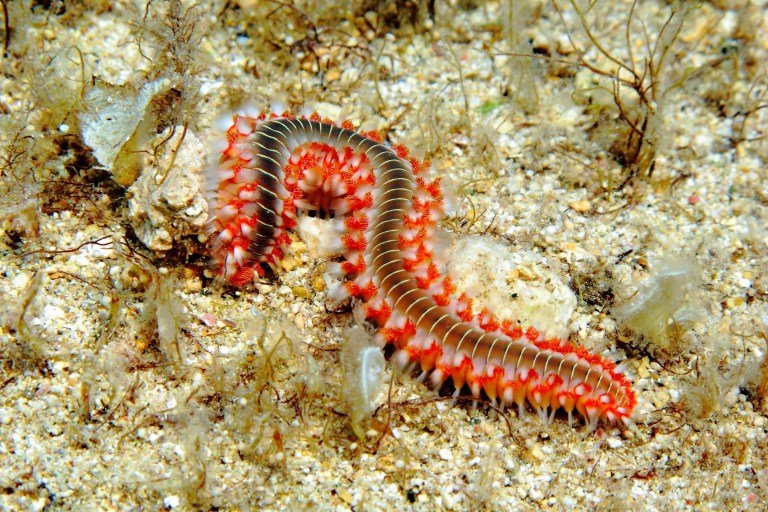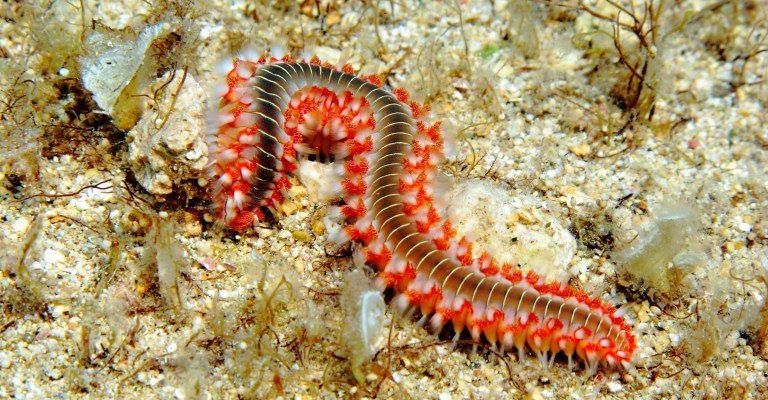
Think of handling bristle worms as a blend of curiosity and caution. You’re eager to learn more about these intriguing creatures, but you want to make sure you’re protected at the same time! To help ensure you’re ready for your next encounter, let’s break down the gear you’ll need, including gloves and safety equipment, showcasing some of the best options available.
Why Use Gloves When Handling Bristle Worms?
Honestly, using gloves is a no-brainer when it comes to handling bristle worms. First and foremost, these worms have tiny bristles called *setae* that can cause skin irritation or a painful sting. It’s similar to touching a nettle plant; you want a barrier between you and the sharp parts! Wearing gloves provides that protection, allowing you to interact with them safely.
But not all gloves are created equal. When selecting gloves, you’ll want to consider both the material and flexibility. A thick pair of general gardening gloves might offer protection, but if they’re too bulky, you won’t be able to feel what you’re doing. On the other hand, a lightweight pair might not offer enough safety. Finding the right balance is key.
Plus, using gloves helps you keep your focus on observing these animals without worrying about getting stung. Whether you’re inspecting them for research or just out of pure curiosity, protecting yourself lets you enjoy the experience fully.
Best Gloves for Handling Bristle Worms
So, which gloves should you consider? Here’s a shortlist of some great options that balance protection and dexterity:
- Neoprene Gloves: These are durable, water-resistant, and provide excellent protection against stings. They also offer good flexibility, making them ideal for handling small creatures.
- Heavy-duty Gardening Gloves: Look for gloves with reinforced palms and fingertips. They’ll keep your hands safe while still allowing you to feel what you’re doing.
- Latex or Nitrile Gloves: These disposable gloves are perfect for short-term handling. They’re not as protective but allow for a high level of sensitivity.
Choosing the right glove depends on your comfort level and the specific situation. If you’re just casually observing, a lighter glove may suffice. But if you’re planning to handle these worms extensively, opt for something more robust.
Additional Gear for Marine Exploration
Apart from gloves, there’s other gear you might want to consider for handling bristle worms safely. Here are a few items that can enhance your experience:
- Long-sleeved Rash Guards: These provide an extra layer of protection against not only bristle worms but also other potentially stingy creatures you might encounter.
- Waterproof First Aid Kit: It’s always a good idea to have one on hand! Accidents can happen, and you’ll want to be prepared.
- Brush or Tweezers: If you’re collecting samples or inspecting worms, using a brush or tweezers can help you do so without direct contact.
These additional elements can provide peace of mind, letting you focus on your marine exploration without worrying too much about getting stung.
The Right Tools for the Job
Now that you’re geared up with gloves and other safety equipment, think about how you’ll manage your bristle worm interactions. Consider using:
- A Container: If you’re handling bristle worms for observation, a sturdy, clear container allows you to see them while keeping them safe.
- Probe or Stick: Using a long-handled tool to prod or move the worms can minimize direct contact.
Having the right tools reduces risks and makes the whole process easier. You want to create a situation where both you and the worms can coexist, even if just for a short time.
Where to Buy Your Gear
Finding the right gloves and gear doesn’t have to be a hassle. Here are a few places to check out:
- Local Outdoor Stores: These often have knowledgeable staff who can recommend the best gear for marine adventures.
- Online Retailers: Websites like Amazon or specialized marine supply stores offer a wide variety of gloves and tools. Just be sure to read reviews to ensure you’re getting quality products.
- DIY Shops: Don’t overlook hardware stores! They often carry gloves meant for heavy-duty work that can be surprisingly effective.
Shopping around can lead you to great deals, so don’t rush your decision.
Proper Handling Techniques for Bristle Worms
Once you’ve got your gear, it’s important to know how to handle bristle worms properly. Here are some tips to help you do it right:
1. Stay Calm: If you’re nervous, the worms can sense that. Approach them slowly and confidently.
2. Use Your Tools: Always use your gloves and tools to minimize direct contact with the worms. Remember, their bristles are there to defend them!
3. Gently Place Them Back: If you’re observing them and decide to release them, do so gently to avoid injury to the worm.
By following these tips, you’ll ensure that both you and the worms have a safe interaction.
Why This Gear Matters
Using the right gloves and gear while handling bristle worms isn’t just about avoiding stings; it’s about respecting these creatures and their environment. By being prepared, you can explore the ocean’s wonders safely and responsibly.
Whether you’re a budding marine biologist or simply a curious beachgoer, protecting yourself allows you to dive deeper into understanding the ecosystems around you. Plus, it’s a great way to foster a fascination for marine life while ensuring you’re doing your part to keep both yourself and the worms safe.
In the end, equipping yourself for an adventure with bristle worms makes the experience enjoyable and educational. So grab those gloves, check your gear, and get ready for an exciting exploration!

